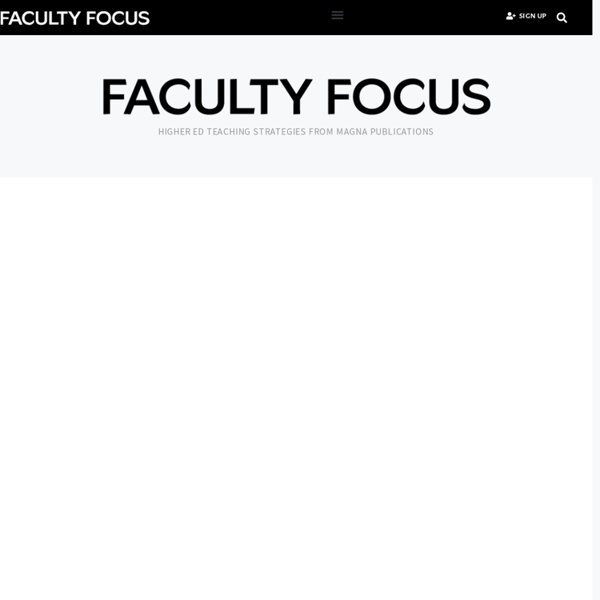



Active Learning - Center for Instructional Technology Active learning includes any activity in which every student must think, create, or solve a problem. Below, Dr. Richard M. Felder from North Carolina State University demonstrates active learning. He provides resources for active learning on his website, including quick ideas for inspiration. Active learning can range from brief activities punctuating a lecture (as demonstrated by Dr. Six Myths About a Teaching Persona What myths about constructing a teaching persona merit review? Teachers regularly exchange general advice about how to establish an identity in the classroom. Like most myths, these contain kernels of truth, but we believe their conclusions require a critical look.
Education Database Online Blog Is Apple Still a Game Changer in Education? The words "Apple" and "innovation" often go hand in hand, but the tech giant has been less dominant in education than it has been in other areas. While the iPad has continued to change the way many classrooms function, Apple's once-leading online education platform, iTunes U, is now left out of most discussions about online learning and OpenCourseWare. In the 1970s, when mainframe computers had a monopoly on academic research, Apple started donating Apple 1 computers to schools. This allowed more students than ever to use computers and led to the rise of computer instruction and technological developments in education.
Practical, real-world tips for e-learning success. Creating great interactive learning experiences requires a few core building blocks: relevant content, pull versus push, and real-world decisions. With those building blocks you're able to structure effective learning scenarios that are meaningful to the learner and helps meet the objectives of the course. One of those building blocks in creating relevant content or content that is placed in a meaningful context. Essentially, you want to recreate the types of scenarios that are similar to the ones the learner has in real life. 20 video project ideas to engage students 1. Create a personal narrative Everyone has a story, and when we share our own experiences, they can be a motivating factor for others -- and help us reflect on our lives and choices.
26 Questions to Ask Students in The First Week of School August 12, 2014 Today as I was browsing through my Twitter feeds I stumbled upon this list of questions every student should be able to answer. The list is created by Terry Heick and spans a wide variety of topics relevant to students learning. I view this list as a great material to use with your student in the first week of this school year. Facilitating Discussion: Five Factors that Boost Student Engagement It’s another of those phrases frequently used and almost universally endorsed but not much talked about in terms of implementation. What does facilitating discussion mean? How should a teacher do it? Two faculty researchers, Finn and Schrodt (2016), frame the problem this way: “The literature is replete with descriptive accounts and anecdotal evidence but lacks the kinds of empirical investigations that could create theoretical coherency in this body of work” (p. 446).
The Writer’s Diet ATTENTION USERS: Please note that the WritersDiet Test is an automated feedback tool, not an assessment tool. The test identifies some of the sentence-level grammatical features that most frequently weigh down academic prose. It is not designed to judge the overall quality of your writing — or anyone else's. For further information and caveats, please read this page. The test automatically excludes in-text citations and all other parenthetical text. Communities of Inquiry (CoI): Cognitive Presence – Model eLearning Throughout this series, we’ve unpacked the three presences of Charles Sander Peirce’s Community of Inquiry (CoI) model. In my previous posts, we’ve looked at social and teaching presence. Cognitive presence, the final presence, combines both social and teaching presence. Today we’ll discuss how you can incorporate cognitive presence in your online course.
Lecture Me. Really. Photo BEFORE the semester began earlier this fall, I went to check out the classroom where I would be teaching an introductory American history course. Like most classrooms at my university, this one featured lots of helpful gadgets: a computer console linked to an audiovisual system, a projector screen that deploys at the touch of a button and USB ports galore. But one thing was missing. The piece of technology that I really needed is centuries old: a simple wooden lectern to hold my lecture notes. I managed to obtain one, but it took a week of emails and phone calls.
Helping Students Develop Critical Information Processing Skills The wealth of digital information has shifted our focus in higher education from developing critical thinking skills to developing critical information processing skills. Today’s students are digital natives, and many assume these students possess basic research skills because of their natural ease with technology. However, many college students lack important information processing skills to understand electronic material.